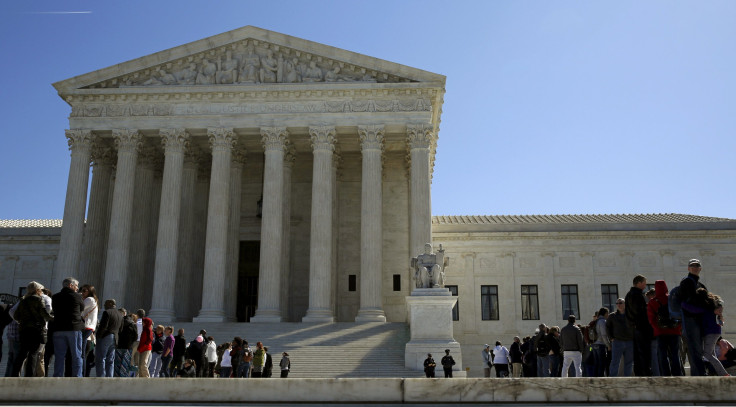Supreme Court Rejects Conservative Challenge In ‘One Person, One Vote’ Case

The Supreme Court on Monday endorsed the way Texas draws its legislative districts based on total population and not just eligible voters — the same method used by all 50 states — rejecting a conservative challenge in a case focusing on the legal principle of "one person, one vote."
The eight-justice court unanimously rebuffed the challenge spearheaded by a conservative legal activist that could have shifted influence in state legislative races away from urban areas, which tend to be racially diverse and favor Democrats, to rural ones predominantly with white voters, who often back Republicans.
Two of the court's conservatives, Clarence Thomas and Samuel Alito, concurred only in the judgment and did sign on to the opinion written by liberal Justice Ruth Bader Ginsburg. The court is one justice short following the Feb. 13 death of conservative Justice Antonin Scalia.
The court said Texas' method of drawing districts does not violate the long-established legal principle of "one person, one vote" endorsed by the Supreme Court in the 1960s during the era of the U.S. civil rights movement.
Ginsburg wrote that the ruling was based on "constitutional history, the court's decisions and long-standing practice" that says states may draw legislative districts based on total population.
Adopting a new approach "would upset a well-functioning approach to districting that all 50 states and countless local jurisdictions have followed for decades, even centuries," Ginsburg wrote.
At issue in the case was whether equality of legislative representation necessitates equal numbers of all residents in voting districts regardless of whether they are eligible to vote or equal numbers of eligible voters.
The policy of counting all residents, and not just those who are eligible voters, boosts the electoral influence of locales, typically urban, with significant populations of people, often Hispanics, ineligible to vote, including legal and illegal immigrants, as well as children.
© Copyright Thomson Reuters 2024. All rights reserved.











